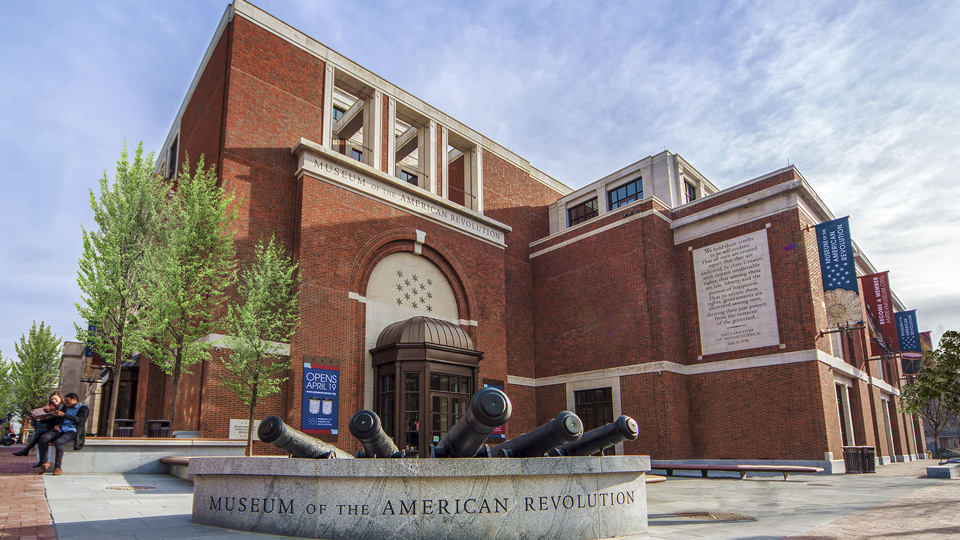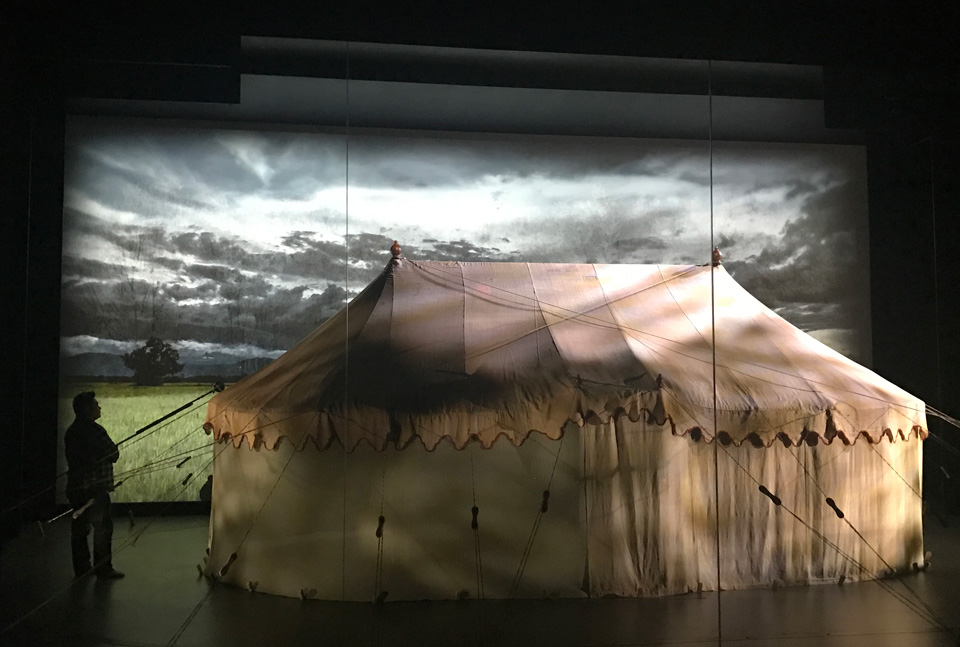Lighting the 200-year-old rock star
Date Posted: 9/11/2017

Available Light designed lighting for the Museum of the American Revolution in Philadelphia, PA.
Strange to say, but until this year there had never been a museum dedicated to the Revolutionary War. That all changed this past April when The Museum of the American Revolution opened in Philadelphia And the “rock star” of the museum, according to The New York Times, is George Washington’s field tent. Yes, that George Washington. The actual, more-than-200-years-old tent that General Washington ate in, slept in, and plotted in (it was called the original Oval Office) is on display at the museum. Making sure it can be seen, though, was a tough battle in itself. The museum had to satisfy the requirements of the conservators—making sure the centuries-old fabric was preserved—yet create an engaging show that would be compelling to modern audiences. To balance these competing directives, they turned to Ted Mather and Rachel Gibney from New York City’s Available Light. And they, in turn, chose ETC ColorSource fixtures.
Mather has extensive experience in museum lighting. “I started getting pulled into this in 1999, when exhibit designers were realizing they had to up their game,” says Mather. Museums realized that simply presenting a wall of information and artifacts behind dusty glass wasn’t connecting with modern audiences, and they were losing the battle for attention with the new generation. “What they started to do was create immersive environments that felt like science labs or operating rooms. When the environment around you changes based on your actions, you feel engaged and there’s a reason for you being there, as opposed to just sitting there,” adds Mather. “Visceral experiences stick with you afterwards.”
And while Mather and Available Light’s experience in the theatre realm gives them a keen understanding of the dynamic ways to use light to tell a story (color, contrast, texture, movement, angle, focus), their experience on the exhibit side means they know how to do it simply. “There’s no run crew in a museum,” explains Mather. “Available light has learned to use a theatrical lighting language without requiring the maintenance and support a show does. We are attuned to doing design work that can withstand the architectural environment.”
All of which is exactly why they were called in for George Washington’s tent. The museum knew they needed to produce a show that would get audiences emotionally invested, and had hired a video production team to create a film-like experience around the tent. The experience would show what the tent meant to George Washington and the success of the American Revolution, all while changing the times of day and locale, evoking a sense of the travels of Washington, depicting different locations of fields, foliage, frozen streams, snow and winter.
“Basically the video is different locations and times of year,” says Mather. “Our lighting needed to track those times of day, where the sun was coming from and going to, then light the scenery around the tent as if it were in that setting—gobos for patchy clouds, some dappled green for foliage.”
But now that the museum had a video exhibit, they had two competing directives — and a lot of restrictions.
Directive One: Docent viewing. The museum still needed a traditional “isolated jewel” look for the tent, showing it off under white light. “Whatever was lighting it had to reveal it as an artifact, a piece of historical material. The fixture had to do white very well,” says Mather.
Directive Two: Show looks. For the video show, the light needed to be able to show a variety of colors as well as have a variety of texture to wash the tent as if it was outside, in the actual environment being displayed on the video. “The whole point here was to show it ‘outside,’ out there with the men in the middle of winter, the middle of summer.” In this mode the light had to be carefully controlled so that it wouldn’t spill on the video projection surfaces, or out into the house.
 George Washington’s tent in its display, with a video backdrop and lighting featuring ETC ColorSource fixtures. Lighting design by Available Light.
George Washington’s tent in its display, with a video backdrop and lighting featuring ETC ColorSource fixtures. Lighting design by Available Light.
In addition to these artistic guidelines, there were numerous technical demands that had to be adhered to. The light had to be UV and infrared free. And finally: There was a hard limit on how much light could hit the tent. The tent could handle no more than 50,000 lux hours per annum. “Whatever the brightness was, we had to meter all of that and add it all up – brightness, length of show, number of shows per day, week and year — at the end of the year it all had to stay below 50,000 lux hours per annum.”
The competing demands for viewing, combined with the hard restrictions on lighting output led to a museum staff that was skeptical the exhibit could happen without damaging the tent.
“The fact that I have a show background immediately raised red flags to some people on the museum’s staff. ‘Will they know anything about conservation?’ ‘Will they be responsible with the artifact?’ We had to build trust,” says Mather.
They did that by conscientiously listening to conservator’s requirements on UV, infrared, and ozone, and using in-depth measurements during thorough test runs. The hard cap of 50,000 lux hours per annum the tent could be exposed to annually? Mather brought in a color spectrophotometer to measure and record the output of lights. That hurdle crossed, the conservators demanded the lights had to be placed at least eight feet away from the tent. Why? “Fibers in the tent will expand and contract from heat,” says Mather. This requirement is a holdover from the days of halogen and has become irrelevant in the age of LED sources—but the conservators didn’t know that. “I had to leave a light on for a few minutes and then ask them to feel the fixture, to see how not warm it was. I took the time to educate the conservators about the lights, because it’s such a big responsibility for them.”
Mather and his crew also built a full-scale mock-up of the exhibit in Orlando. They used it to test several different fixtures, measure output and judge the quality of the light. “We tested several different fixtures: ETC’s LED Source Four Series 2 with the Lustr and Tungsten arrays, ETC’s ColorSource fixture and a few others,” says Mather. “We needed a fixture with a high quality white and good color. We wanted pick a fixture that would make the historians happy.” They chose the ColorSource line of ellipsoidals and PARs thanks to the quality of their light and their beam shaping capabilities. And the historians were happy—so happy, in fact, that they asked Available Light to design the light for the rest of the museum, too.
The result is a show – and museum – that preserves the historical artifacts of our nation, and also creates an excitement around it.
“I’m delighted to have been able to work with such a creative team dedicated to making the tent a meaningful part of our nation’s story,” adds Mather. “I’m thrilled with how it turned out! Rather than an embalmed artifact, it really breathes life into our relationship with George Washington.”
Not bad for a 200-year-old tent and the latest in lighting.